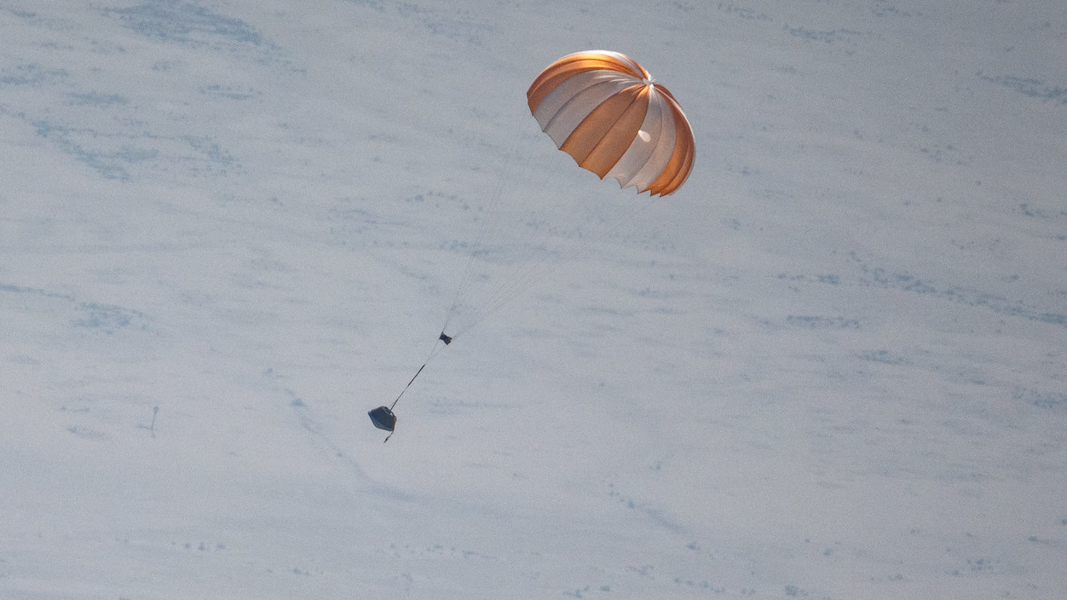The OSIRIS-REx mission is nearing its final stretch as it closes in on Earth after a seven-year round trip to the asteroid Bennu. The capsule containing the sample is scheduled the make the fiery plunge through the atmosphere on September 24th.
The mission, Origins, Spectral Interpretation, Resource Identification, Security-Regolith Explorer, launched back in September 2016 atop a United Launch Alliance Atlas V to begin its journey to the near-Earth asteroid and after a 2-year trip through space arrived in orbit around Bennu in December 2018.
The orbiter proceeded to study the asteroid for nearly 2 more years, searching for a proper site to conduct its touch-and-go landing in order to collect a viable sample of the asteroid. After a thorough scan of the celestial body, sometimes orbiting less than a mile above the surface, NASA selected its location and commanded the orbiter to lower itself to the surface for the sample.
Well, I definitely touched down on Bennu!
Preliminary data show the sampling head touched Bennu’s surface for approximately 6 seconds, within 3 feet (1 meter) of the targeted location. #ToBennuAndBack
More details: https://t.co/4rBrB27FEZ pic.twitter.com/LjDQICmxJM
— NASA’s OSIRIS-REx (@OSIRISREx) October 21, 2020
The goal of the mission was to collect 2.1 ounces of regolith. After the maneuver was completed, the orbiter backed away from Bennu with its sample. It wasn’t smooth sailing, though, as the lid for the sample tube did not have a perfect seal and was leaking back out into space. When mission controllers saw this, they commanded the spacecraft to store the tube in the Sample Return Capsule.
At first, the teams did not know if they managed to get the 2.1-ounce sample, but after measurements, they determined they had at least 8.1 ounces of regolith from Bennu, according to Dante Lauretta, OSIRIS-REx principal investigator from the University of Arizona, Tucson.
Once the sample was confirmed to be secured in the capsule, OSIRIS-REx left the orbit of Bennu in May 2021 for its trip back to Earth.
Back on the ground in Utah, recovery teams have now run multiple test runs of recovery day, including multiple drop simulations from an aircraft and practicing to make sure the sample is handled carefully and not contaminated after landing.
Teams will conduct a go/no go poll prior to the Sample Return Capsules release from the orbiter, and if for some reason a no is given, they won’t have a chance to recover the sample until 2025 after a risky trip near the Sun.
Once a go is given, the capsule will be released from the orbiter 4 hours before the scheduled re-entry. The capsule will hit the atmosphere at 27,000 miles per hour, followed by a parachute being deployed and a soft touchdown at 10 miles per hour. The orbiter will perform a maneuver after release so it doesn’t enter the atmosphere and will undertake a brand new mission to study the asteroid Apophis.
Scientists hope to get a better understanding of how the Earth and Solar System formed, and a successful sample return will produce a ton of exciting discoveries.
Questions or comments? Shoot me an email at rangle@teslarati.com, or Tweet me @RDAnglePhoto.











